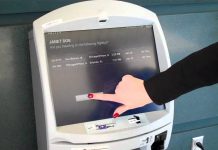This post may contain affiliate links. We may earn money or products from the highlighted keywords or companies or banners mentioned in this post.

Despite the crisis, the data on tourism in Sicily over the last two years show a firm upturn. In 2014 it was registered almost 15 million visitors (+6.1%) and 4.5 million arrivals (+8.8% compared to 2013).
According to Unioncamere Sicilia, the association of Sicilian chambers of commerce, the amount of international tourists is quite balanced on the island, as 47.8% of visitors come from abroad and 52.2% are Italians, who are now more willing to discover the beauties of their own country. 2014 saw 11% increase of domestic arrivals. According to the national institute of statistics (ISTAT), Italians spend on average 2.94 days in Sicily and foreigners 3.57 days. The average is 3.24 days.
According to the data, most tourists come to Sicily between April and October. Such findings clearly show the current difficulties of the local tourism authorities to attract off-season tourism to the island. Experts point out that Sicily needs to go beyond the concept of sun and beaches and promote the island as a cultural and active destination throughout the entire year.
“The findings are certainly not a surprise,” said Carmelo Indelicato, CEO and co-founder of Sicilying, local tour operator. “After all, this is exactly the main obstacle tour operators face here.”
According to Eurostat data, 10 to 20 million hotel rooms were booked in Sicily by both residents and visitors in 2015. Further data are provided by the researchers of Digital Innovation from the Polytechnic University of Milan stating that in 2015 about 51 billion Euro were spent on online reservations in Italy, which is more or less the same amount spent on traditional off-line booking.
The researchers stated that the Italian digital tourist is particularly active on the Internet in all the stages of their vacation. 88% of Italians search information online before their holiday and 82% book or buy online their accommodation, transport, or leisure-time activities. During their holiday, 44% of tourists buy online various extra-activities and 86% use apps to support their experience at the destination. 61% tourists are then digitally active when they come home from the holiday.










